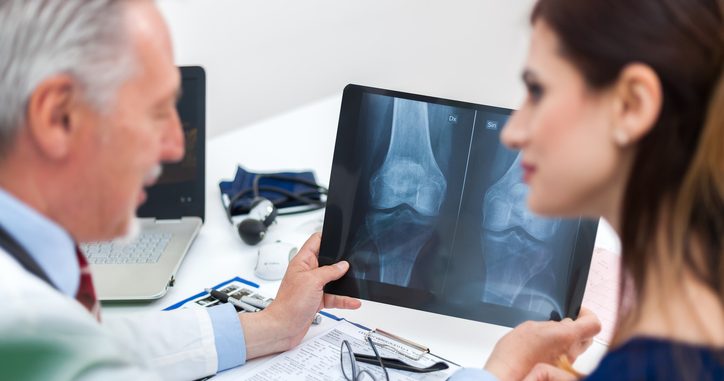Quite often when we hear the word osteoporosis, many of us instantly relate it in our minds to middle-aged women. While this presumption is commonplace, a seldom known fact is that 22% of those who suffer bone loss and deterioration from this ‘silent killer’ are, in fact, men. The nickname ‘silent killer’ stems from the fact that we do not always see the damage osteoporosis causes to our bones. While other health concerns such as skin disease or countless internal problems set off red flags which may be easily detectable, osteoporosis frequently goes unnoticed, especially when it comes to men. Prevention or timely detection of osteoporosis can help to minimize the damage caused in our body.

Source: Thinkstock/Maria_esau
The most common of osteoporosis symptoms in men, most of which come with bouts of pain, may include:
- Gum disease
- Muscle cramping
- Brittle fingernails
- An inability to exercise with ease
- A loss in height
- Poor posture
- Problems with the ability to grip
Double Check the Vitamin D
A deficiency of vitamin D has a strong link to osteoporosis. Although lacking vitamin D is not necessarily a sign of the disease itself, it can play a prominent role in the loss of bone density. Various studies show that men who have lower than normal vitamin D levels are more prone to suffer from osteoporosis. To avoid this from occurring, experts suggest middle-aged and older men, especially those above 50, have their vitamin D levels checked on a regular basis. A simple aid in helping to correct this problem includes getting an adequate amount of exposure to sunlight. Furthermore, you can also take Vitamin D as a daily supplement.
Open Wide
One of the first and most common osteoporosis symptoms can actually be present in one of the least likely of places – your mouth. Indeed, the mouth is one of the first areas that will show signs of deterioration in bone density. Periodontal disease, more commonly known as gum disease, is not due to osteoporosis but a decline in jaw bone density. The outcome is receding of gums.
A combination of gum disease and osteoporosis causes bone degradation in the mouth to increase. Experts recommend that people visiting their dentist mention if they have a history of osteoporosis in their family, especially when discussing oral bone loss. Depending on the severity of gum disease, the indication of osteoporosis being present in the body is noted. An early detection can help in seeking treatment and preventing osteoporosis from further weakening the jaw bone. This is essential for gum disease patients to help cope with life in a more comfortable manner.
Listen to Your Body
Very often, most people assume that only pain originating from the bones themselves can have a link to osteoporosis. However, one should not ignore muscle cramps either. If you experience frequent muscle pain and cramps, it would be wise to let your doctor take a closer look. Besides actual cramping, an inability to do physical activities without experiencing discomfort is also a loud and clear sign that a visit to the doctor is due.

Source: Thinkstock/Horillaz
In order to maintain a healthy living, adults should exercise at least 30 minutes a day. For men who find themselves in pain easily when attempting even the most mundane physical activities, having a simple daily exercise routine can be a difficult task to accomplish. Losing one’s ability to grip objects in one’s hands can be a clear sign of osteoporosis. When visiting your physician, it’s important to remember to mention any family history of osteoporosis.
Standing, Sitting, Shrinking
Other evident signs of osteoporosis symptoms include brittleness found in finger and toe nails, a loss of height, and even a poor sitting and standing posture. I’m sure we’ve all been told at one time or another while growing up to “stand or sit up straight.” However, at the time, you probably didn’t understand why it was so important. The reason is actually a lot more complex as posture has a direct connection with bone deterioration.
Shrinking is a common problem that goes hand-in-hand with the process of aging. It also has a direct association with a decline in bone density. If you feel or more likely have been told that you tend to slouch or appear shorter, it would be in your best interest to have it checked by your doctor for links to osteoporosis. Tackling a problem on its onset and possibly keeping it in control is better than dealing with the consequences. Remember, the consequences of osteoporosis can be a painful experience for both women and men.
Sourced from: activebeat.co
Featured Image Source: Thinkstock/Minerva Studio








